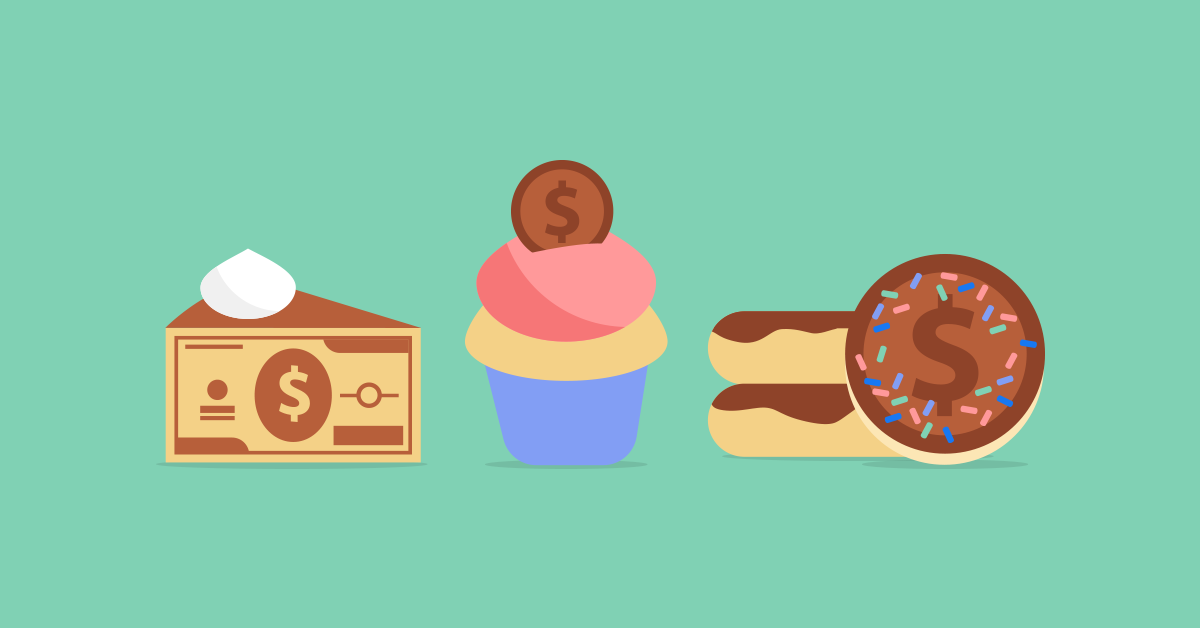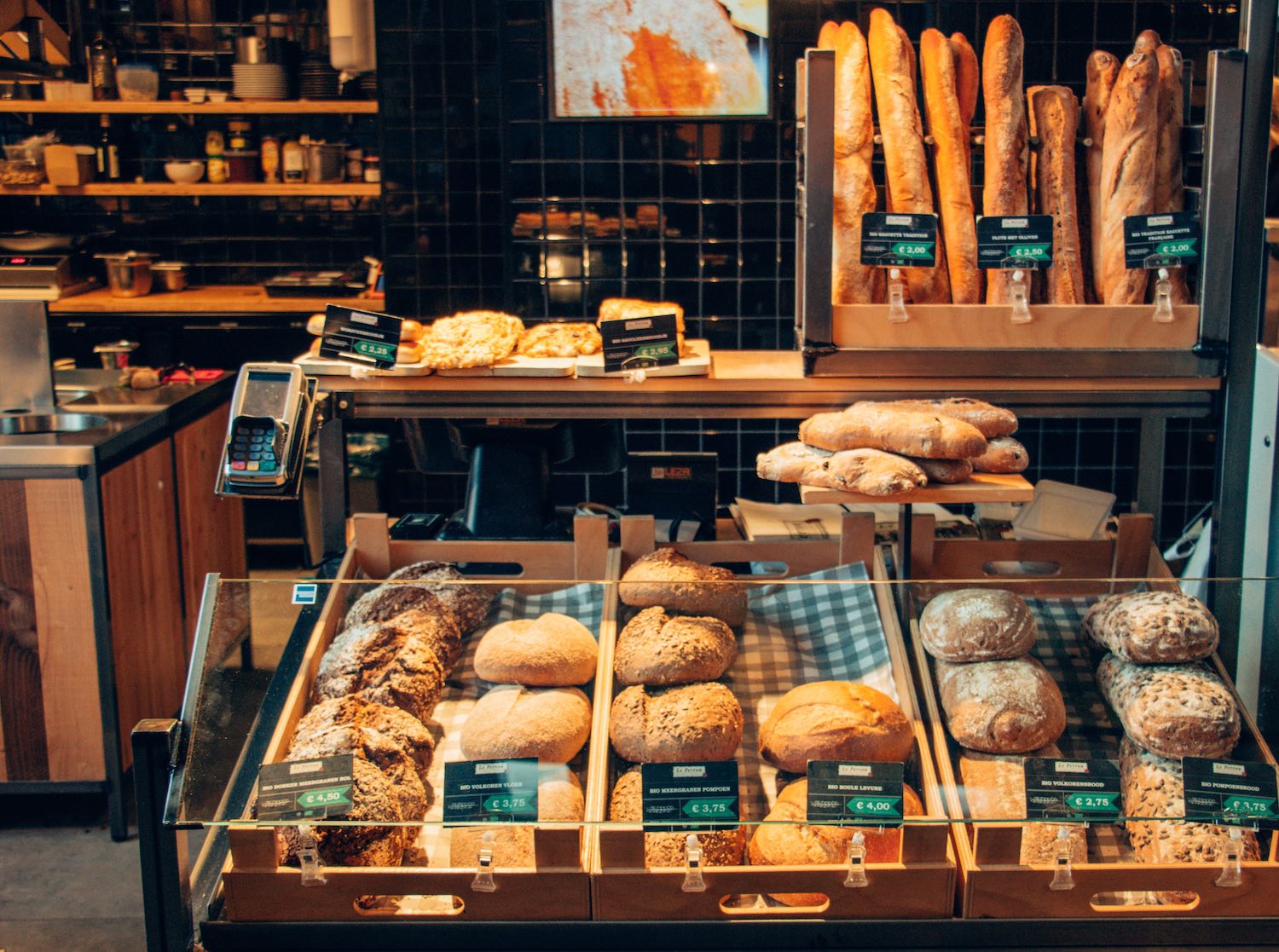
Pricing baked goods can be a challenge for both new and veteran bakery owners alike. There are many variables that play into pricing, so it can be difficult to know which ones to base your calculations off of. The right prices will not only help your business meet your customers’ expectations, but you’ll be able to make a healthy profit margin—which are two key ingredients for a successful business.
In this guide to pricing baked goods, we’ve compiled a list of the most important factors to consider when pricing your bakery’s menu.
- Why it’s important to price your baked goods appropriately
- How much does it cost to make your baked goods?
- Factor in your overhead costs
- Calculate your cost of goods sold
- Calculate your profit margin
- Leave wiggle room for the unexpected
- What to avoid when pricing your bakery menu
Make the most memorable menu for your guests
Your menu should reflect your bakery's brand, excite your guests and bring in profits. Download our free guide to learn how to make the best possible menu for your business
Why it’s important to price your baked goods appropriately
Your pricing plays a crucial role in your business’s overall revenue. Incorrect pricing can jeopardize your business’s profitability, and also leave a negative impression on your customers. No one wants to be put out of business or have bad online reviews written about their outrageous pricing! Pricing your baked goods appropriately can help ensure that your business gets off to a great start, both financially and emotionally.
How much does it cost to make your baked goods?
The first step to figuring out how to price your baked goods is to determine how much it costs to make them. For each cake, cookie, or bread you make, you’ll need to factor in:
- The cost of ingredients. How much did it cost to buy the eggs, flour, sugar, etc.?
- Your recipe yield. How many cookies does one batch produce?
- Cost per serving. This can be found by calculating the ingredient cost by the recipe yield.
- Time it takes to make each batch. You’re not working for free! Be sure to factor in your hourly rate and divide it by the recipe yield to get the labor cost per item.
Once you’ve figured out these numbers, you’ll need to take your overhead costs into account. This will ensure you’ve priced your items more accurately.
Factor in your overhead costs
Your overhead costs should be one of the most important things that influence your food and beverage menu prices. It’s one thing to tally up the costs of your ingredients and labor, but if you don’t include things like your utility bills, leasing costs, equipment maintenance, cleaning products and marketing costs, you could find yourself operating with too low of a profit margin. There are two types of overhead costs you should consider:
Variable costs
Variable costs are costs that increase once your business starts to grow. For example, you might find that you need to order more and more ingredients as time goes on to amp up your production. Similarly, you may need to hire additional employees to keep up with demand. Labor, ingredient and packaging costs will need to increase as your output increases.
Fixed costs
Fixed costs are costs that don’t change from month to month. These include things like your rent, utility bills and POS system.
Startup costs
You’ll likely have some startup costs in the very early stages of your bakery. For example, you may need to pay to file for an LLC, buy your initial kitchen equipment or pay a real estate broker for helping you find a space. These are all examples of startup costs that you may need to take into consideration if they’re considerably large and need to be paid off quickly.

Calculate your cost of goods sold
Your prices should cover your cost of goods sold, or COGS, at the very minimum.
The formula to calculate your COGS is: Cost per serving + Labor cost per item + Variable Costs + Fixed costs + Startup costs.
Find your profit margins
Once you’ve figured out the COGS for each of your items, you can add on an additional amount to ensure you make a profit from each sale. Whatever amount you decide, make sure it’s within reason. For example, if the COGS for your chocolate chip cookies is $1.00, but you add on $8.00, you’ll be selling a cookie for $9.00, which is quite expensive. You can calculate your profit margin with a profit margin calculator.
Profit margins vary by industry, but generally, a 5% margin is low, a 10% margin is average and a 20% margin is good. The key is to find a balance between the profit that you want to be generating with what’s realistic for your customers.
Leave wiggle room for the unexpected
If 2020 taught us anything, it’s to prepare for unexpected situations. For example, if your kitchen equipment malfunctions and you find yourself without an oven or a food processor, you risk losing out on revenue if you don’t can’t replace faulty equipment immediately.
While you can’t plan for these events or predict when they’re going to happen, you can do your best to ensure that you’ve budgeted enough money to tackle these issues should they arise. You should ensure that your baked goods are priced so that you’re making enough gross profit to allow your budget to be flexible, just in case.
What to avoid when pricing your bakery menu
When starting your bakery, there are a few things that you should avoid to ensure your business is profitable and the sales keep rolling in.
Never undervalue your skills
When you’re selling baked goods in your bakery, it’s important to value what you do. If you’re receiving special orders for items such as wedding cakes, it’s a sign that your customers appreciate your work and won’t mind paying a premium for it. Simply put, if it looks good and tastes great, people will pay for it. Keep this in mind when pricing your menu items. Valuing your goods at what you feel they’re worth can help you to maintain a low-cost percentage.
Don’t underestimate the importance of the service you provide
You’re providing a valuable service. People buy your goods because they don’t have the time to make similar things themselves, or more likely, they don’t have the skill required to create professional-looking baked goods. They appreciate your service, and the fact that you’re making their lives easier is extremely valuable.
Don’t price based on your competition
No two bakeries are exactly alike. While it’s tempting to want to base your pricing on your competition, remember that your baked goods and theirs might not have the same labor or ingredients going into them. You should price based on your specific costs and effort, not someone else’s.
Avoid “emotional pricing”
Pricing your baked goods a certain way just because it “feels” right isn’t the way to go. Make sure you’ve done your calculations to justify pricing items a certain way.
Takeaways for pricing baked goods
The prices you set for your bakery will have a huge impact on your business, so it’s important to take the right things into account. Once you’ve set your pricing, keep an eye on how your business performs. Use the reporting features on your bakery POS system to track which products are selling and at what quantities. You can always adjust your pricing after looking at your data and insights.
Need help getting started finding a POS to run your bakery with ease? Let’s chat!

News you care about. Tips you can use.
Everything your business needs to grow, delivered straight to your inbox.





